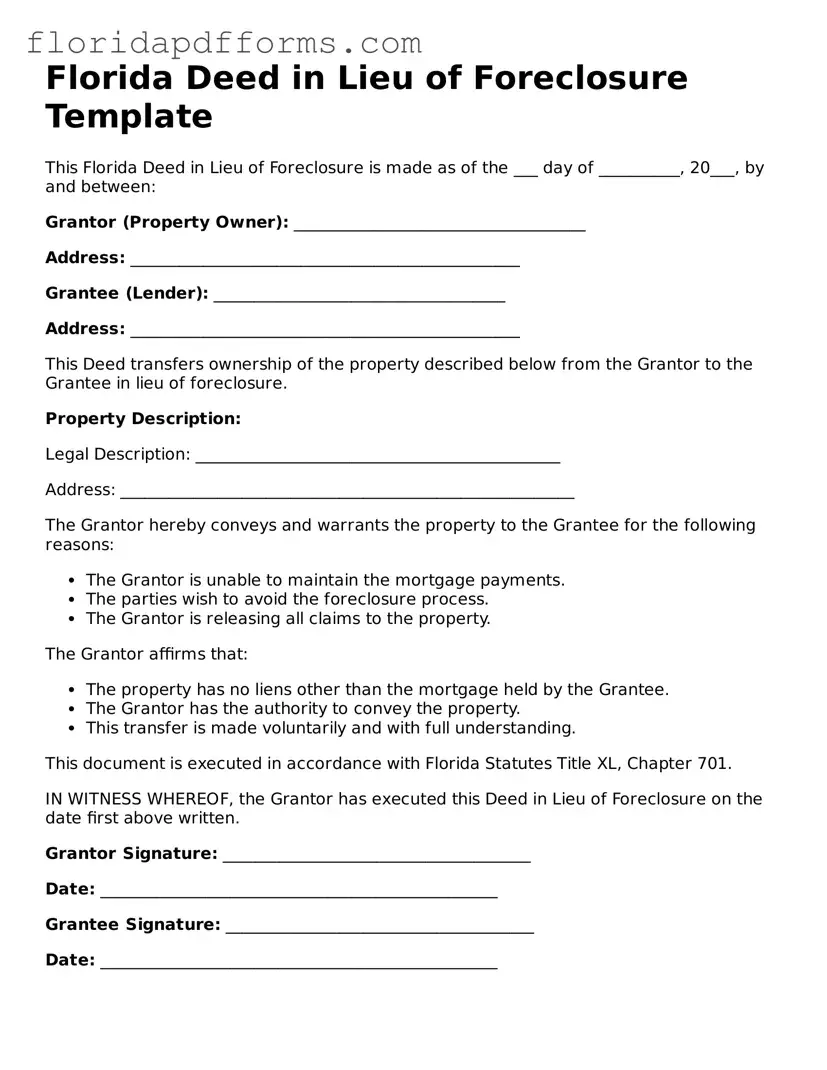Florida Deed in Lieu of Foreclosure Template
This Florida Deed in Lieu of Foreclosure is made as of the ___ day of __________, 20___, by and between:
Grantor (Property Owner): ____________________________________
Address: ________________________________________________
Grantee (Lender): ____________________________________
Address: ________________________________________________
This Deed transfers ownership of the property described below from the Grantor to the Grantee in lieu of foreclosure.
Property Description:
Legal Description: _____________________________________________
Address: ________________________________________________________
The Grantor hereby conveys and warrants the property to the Grantee for the following reasons:
- The Grantor is unable to maintain the mortgage payments.
- The parties wish to avoid the foreclosure process.
- The Grantor is releasing all claims to the property.
The Grantor affirms that:
- The property has no liens other than the mortgage held by the Grantee.
- The Grantor has the authority to convey the property.
- This transfer is made voluntarily and with full understanding.
This document is executed in accordance with Florida Statutes Title XL, Chapter 701.
IN WITNESS WHEREOF, the Grantor has executed this Deed in Lieu of Foreclosure on the date first above written.
Grantor Signature: ______________________________________
Date: _________________________________________________
Grantee Signature: ______________________________________
Date: _________________________________________________
